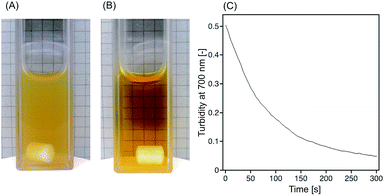
The findings thus reveal the distinct advantage offered by these hybrid materials: a single composite yields access to a range of dynamic responses and structures. These studies provide insight into the complex mechanisms by which multiple stimuli interact with an adaptive material to produce different forms of reconfiguration and actuation. Via our model, we uncovered the cooperative interactions that control the reorganization of the responsive fibers and the morphological changes of the gel in the presence of light, heat and the combination of the two stimuli. The complexity and potential functionality of the material is, however, increased when the fibers are also stimuli-responsive and thus, constitute active elements. If the fibers were passive elements, the materials would already exhibit valuable attributes, with the strong fibers acting as a skeleton that reinforces the “muscle” provided by the responsive, active gel. Conceptual insights Using computational modeling, we designed new, physically-realizable composites that integrate functionalized, photo-responsive fibers with thermo-responsive gels. Overall, our results point to a robust method for controllably reconfiguring the morphology of compliant composites and amplifying the effects of external environmental cues (light or temperature) on the behavior of these systems. Hence, our findings indicate how a given sample can be fashioned into different shapes through the use of separate stimuli. Common to both the tethered and untethered samples, one material displays a distinct response to the different stimuli. When the sample is detached from the surface, then the composites shrink like an accordion when heated and bend like a caterpillar when illuminated. In particular, samples anchored to a surface bend in one direction when illuminated and in the opposite direction when heated. When the SP-functionalization is confined to fibers that are embedded in the gel, the material displays distinctly different behavior in the presence of light and heat. If these chromophores are uniformly distributed in this LCST gel (without the embedded fibers), then both light and heat produce the same effect on the sample, causing the gel to undergo a uniform collapse. The elastic fibers are functionalized with spirobenzopyran (SP) chromophores, which become hydrophobic under blue light. The gel displays a lower critical solution temperature (LCST), and thus, shrinks at elevated temperatures. As a step toward creating such useful, adaptive materials, we use computational modeling to design a composite that integrates a thermo-responsive polymer gel and photosensitive fibers. Furthermore, it was confirmed that the highly cross-linked cylindrical gel rod with macroporous structure showed rapid bending deformation due to the asymmetric light irradiation.Materials that could be reconfigured multiple times into different shapes with the use of different stimuli could dramatically impact manufacturing processes. It was found that the fastest photo- and thermo-responsive shrinking was observed for loosely crosslinked porous hydrogels. The time dependence of bending deformation due to the asymmetric light irradiation as well as kinetics of shrinking has been measured. Both photo- and thermo-responsive properties of gels have been investigated and compared.

Poly( N-isopropylacrylamide) gels were functionalized with photo-responsive spirobenzopyran and solvent/nonsolvent mixtures were used as swelling agent to introduce network heterogeneities during the gelation process. Since any technical application of polymer gels critically depends on the response rate, therefore porous hydrogels have been prepared in order to accelerate the response reaction. Novel hydrogels that shrink in response to light irradiation and temperature change have been developed.


 0 kommentar(er)
0 kommentar(er)
